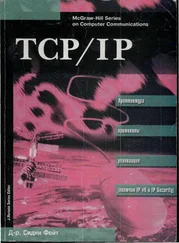There is a subtle problem with this protocol – Bob has to assume that the key  he receives from Sam (via Alice) is fresh. This is not necessarily so: Alice could have waited a year between steps 2 and 3. In many applications this may not be important; it might even help Alice to cache keys against possible server failures. But if an opponent – say Charlie – ever got hold of Alice's key, he could use it to set up session keys with many other principals. And if Alice ever got fired, then Sam had better have a list of everyone in the firm to whom he issued a key for communicating with her, to tell them not to believe it any more. In other words, revocation is a problem: Sam may have to keep complete logs of everything he's ever done, and these logs would grow in size forever unless the principals' names expired at some fixed time in the future.
he receives from Sam (via Alice) is fresh. This is not necessarily so: Alice could have waited a year between steps 2 and 3. In many applications this may not be important; it might even help Alice to cache keys against possible server failures. But if an opponent – say Charlie – ever got hold of Alice's key, he could use it to set up session keys with many other principals. And if Alice ever got fired, then Sam had better have a list of everyone in the firm to whom he issued a key for communicating with her, to tell them not to believe it any more. In other words, revocation is a problem: Sam may have to keep complete logs of everything he's ever done, and these logs would grow in size forever unless the principals' names expired at some fixed time in the future.
Almost 40 years later, this example is still controversial. The simplistic view is that Needham and Schroeder just got it wrong; the view argued by Susan Pancho and Dieter Gollmann (for which I have some sympathy) is that this is a protocol failure brought on by shifting assumptions [781, 1493]. 1978 was a kinder, gentler world; computer security then concerned itself with keeping ‘bad guys’ out, while nowadays we expect the ‘enemy’ to be among the users of our system. The Needham-Schroeder paper assumed that all principals behave themselves, and that all attacks came from outsiders [1428]. Under those assumptions, the protocol remains sound.
The most important practical derivative of the Needham-Schroeder protocol is Kerberos, a distributed access control system that originated at MIT and is now one of the standard network authentication tools [1829]. It has become part of the basic mechanics of authentication for both Windows and Linux, particularly when machines share resources over a local area network. Instead of a single trusted third party, Kerberos has two kinds: authentication servers to which users log on, and ticket granting servers which give them tickets allowing access to various resources such as files. This enables scalable access management. In a university, for example, one might manage students through their colleges or halls of residence but manage file servers by departments; in a company, the personnel people might register users to the payroll system while departmental administrators manage resources such as servers and printers.
First, Alice logs on to the authentication server using a password. The client software in her PC fetches a ticket from this server that is encrypted under her password and that contains a session key  . Assuming she gets the password right, she now controls
. Assuming she gets the password right, she now controls  and to get access to a resource
and to get access to a resource  controlled by the ticket granting server
controlled by the ticket granting server  , the following protocol takes place. Its outcome is a key
, the following protocol takes place. Its outcome is a key  with timestamp
with timestamp  and lifetime
and lifetime  , which will be used to authenticate Alice's subsequent traffic with that resource:
, which will be used to authenticate Alice's subsequent traffic with that resource:
Translating this into English: Alice asks the ticket granting server for access to  . If this is permissible, the ticket
. If this is permissible, the ticket  is created containing a suitable key
is created containing a suitable key  and given to Alice to use. She also gets a copy of the key in a form readable by her, namely encrypted under
and given to Alice to use. She also gets a copy of the key in a form readable by her, namely encrypted under  . She now verifies the ticket by sending a timestamp
. She now verifies the ticket by sending a timestamp  to the resource, which confirms it's alive by sending back the timestamp incremented by one (this shows it was able to decrypt the ticket correctly and extract the key
to the resource, which confirms it's alive by sending back the timestamp incremented by one (this shows it was able to decrypt the ticket correctly and extract the key  ).
).
The revocation issue with the Needham-Schroeder protocol has been fixed by introducing timestamps rather than random nonces. But, as in most of life, we get little in security for free. There is now a new vulnerability, namely that the clocks on our various clients and servers might get out of sync; they might even be desynchronized deliberately as part of a more complex attack.
What's more, Kerberos is a trusted third-party (TTP) protocol in that  is trusted: if the police turn up with a warrant, they can get Sam to turn over the keys and read the traffic. Protocols with this feature were favoured during the ‘crypto wars’ of the 1990s, as I will discuss in section 26.2.7. Protocols that involve no or less trust in a third party generally use public-key cryptography, which I describe in the next chapter.
is trusted: if the police turn up with a warrant, they can get Sam to turn over the keys and read the traffic. Protocols with this feature were favoured during the ‘crypto wars’ of the 1990s, as I will discuss in section 26.2.7. Protocols that involve no or less trust in a third party generally use public-key cryptography, which I describe in the next chapter.
A rather similar protocol to Kerberos is OAuth, a mechanism to allow secure delegation. For example, if you log into Doodle using Google and allow Doodle to update your Google calendar, Doodle's website redirects you to Google, which gets you to log in (or relies on a master cookie from a previous login) and asks you for consent for Doodle to write to your calendar. Doodle then gives you an access token for the calendar service [864]. I mentioned in section 3.4.9.3that this poses a cross-site phishing risk. OAuth was not designed for user authentication, and access tokens are not strongly bound to clients. It's a complex framework within which delegation mechanisms can be built, with both short-term and long-term access tokens; the details are tied up with how cookies and web redirects operate and optimised to enable servers to be stateless, so they scale well for modern web services. In the example above, you want to be able to revoke Doodle's access at Google, so behind the scenes Doodle only gets short-lived access tokens. Because of this complexity, the OpenID Connect protocol is a ‘profile’ of OAuth which ties down the details for the case where the only service required is authentication. OpenID Connect is what you use when you log into your newspaper using your Google or Facebook account.
Читать дальше

 he receives from Sam (via Alice) is fresh. This is not necessarily so: Alice could have waited a year between steps 2 and 3. In many applications this may not be important; it might even help Alice to cache keys against possible server failures. But if an opponent – say Charlie – ever got hold of Alice's key, he could use it to set up session keys with many other principals. And if Alice ever got fired, then Sam had better have a list of everyone in the firm to whom he issued a key for communicating with her, to tell them not to believe it any more. In other words, revocation is a problem: Sam may have to keep complete logs of everything he's ever done, and these logs would grow in size forever unless the principals' names expired at some fixed time in the future.
he receives from Sam (via Alice) is fresh. This is not necessarily so: Alice could have waited a year between steps 2 and 3. In many applications this may not be important; it might even help Alice to cache keys against possible server failures. But if an opponent – say Charlie – ever got hold of Alice's key, he could use it to set up session keys with many other principals. And if Alice ever got fired, then Sam had better have a list of everyone in the firm to whom he issued a key for communicating with her, to tell them not to believe it any more. In other words, revocation is a problem: Sam may have to keep complete logs of everything he's ever done, and these logs would grow in size forever unless the principals' names expired at some fixed time in the future. . Assuming she gets the password right, she now controls
. Assuming she gets the password right, she now controls  and to get access to a resource
and to get access to a resource  controlled by the ticket granting server
controlled by the ticket granting server  , the following protocol takes place. Its outcome is a key
, the following protocol takes place. Its outcome is a key  with timestamp
with timestamp  and lifetime
and lifetime  , which will be used to authenticate Alice's subsequent traffic with that resource:
, which will be used to authenticate Alice's subsequent traffic with that resource:







 . If this is permissible, the ticket
. If this is permissible, the ticket  is created containing a suitable key
is created containing a suitable key  and given to Alice to use. She also gets a copy of the key in a form readable by her, namely encrypted under
and given to Alice to use. She also gets a copy of the key in a form readable by her, namely encrypted under  . She now verifies the ticket by sending a timestamp
. She now verifies the ticket by sending a timestamp  to the resource, which confirms it's alive by sending back the timestamp incremented by one (this shows it was able to decrypt the ticket correctly and extract the key
to the resource, which confirms it's alive by sending back the timestamp incremented by one (this shows it was able to decrypt the ticket correctly and extract the key  ).
). is trusted: if the police turn up with a warrant, they can get Sam to turn over the keys and read the traffic. Protocols with this feature were favoured during the ‘crypto wars’ of the 1990s, as I will discuss in section 26.2.7. Protocols that involve no or less trust in a third party generally use public-key cryptography, which I describe in the next chapter.
is trusted: if the police turn up with a warrant, they can get Sam to turn over the keys and read the traffic. Protocols with this feature were favoured during the ‘crypto wars’ of the 1990s, as I will discuss in section 26.2.7. Protocols that involve no or less trust in a third party generally use public-key cryptography, which I describe in the next chapter.









